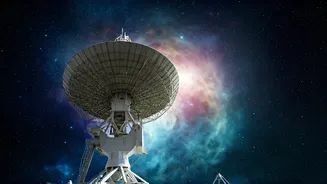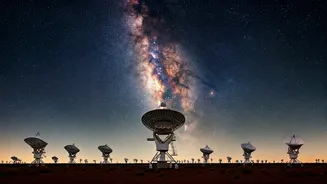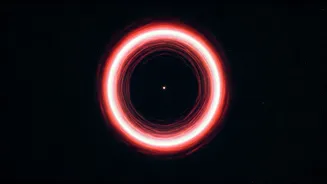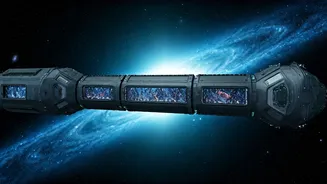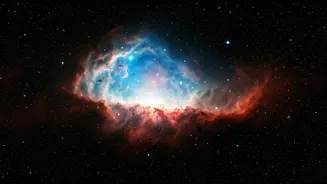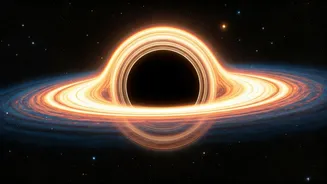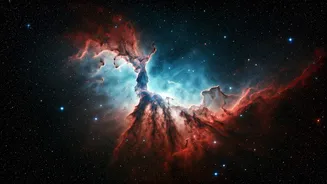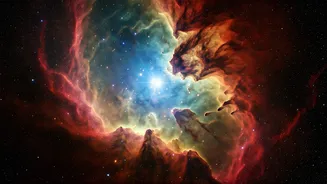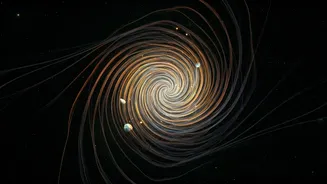Unveiling the Map
The Murchison Widefield Array (MWA), an Australian instrument, has been instrumental in the development of this significant radio map. Scientists employed
the MWA to observe low-frequency radio waves, which are crucial for detecting signals that originated during the universe's earliest periods. This effort is aimed at exploring the 'Epoch of Reionization,' a crucial phase in cosmic history that occurred hundreds of millions of years after the Big Bang. During this period, the universe transitioned from a dark, opaque state to one filled with light, as the first stars and galaxies formed and ionized the surrounding neutral hydrogen gas. The radio map constructed by the team provides insights into this transformative epoch. The MWA team meticulously collected data over several years to create this comprehensive map. This radio map is significant due to its precision and the volume of information it provides, leading to a more profound understanding of how the universe began. The data collected provides crucial information regarding how the first stars and galaxies affected the primordial gas, making the universe transparent.
Deeper Understanding
This detailed radio map provides valuable insights into the era when the first stars and galaxies were born. The MWA’s observations allow scientists to investigate the interactions between these early structures and the surrounding intergalactic medium. The team's research is focused on pinpointing the subtle signals produced during the Epoch of Reionization, helping to understand how the intergalactic medium transformed. By observing the low-frequency radio waves, they can identify patterns and structures indicating where the first stars and galaxies were located. The radio map has proven to be a vital tool in mapping the distribution and behavior of neutral hydrogen gas that existed at the beginning of the universe. This provides an important view of how early cosmic structures evolved. The precise details obtained through this mapping shed new light on how the universe expanded and how the initial conditions influenced the formation of the galaxies we see today. The study results offer significant support for theories about cosmic evolution.
MWA's Contribution
The Murchison Widefield Array (MWA) played an essential role in constructing this groundbreaking map. The MWA is located in the remote Murchison region of Western Australia. The telescope is designed to detect low-frequency radio waves, which are crucial to exploring the early universe. The array comprises thousands of antennas distributed over a vast area, enabling scientists to gather extensive and detailed data. The MWA's unique capabilities, including its sensitivity to the faint radio signals from distant cosmic events, made it the ideal instrument for this endeavor. The data collection process involved years of observation and complex signal processing techniques. The MWA team meticulously calibrated the data to remove interference and isolate the weak signals from the early universe. Scientists can study the distribution and behavior of neutral hydrogen and find the patterns of the first stars with the use of MWA. The successful operation of the MWA demonstrates the effectiveness of collaborative and innovative astronomical research.
Future Discoveries
This achievement opens the door to future studies of the early universe, allowing researchers to explore its history with greater depth. The high-resolution radio map provides a base for future investigations. Scientists can now analyze the data in search of specific signals which gives them the possibility to learn more about the formation and development of the first stars and galaxies. In addition, the information gained will assist in testing and refining existing cosmological models. They will provide additional insights into phenomena such as dark matter and dark energy, which are believed to have a significant role in the universe's evolution. The technology and methodologies used in this project will also be employed to analyze other cosmic events, such as the afterglow of the Big Bang. Future advancements in telescope technology will further enhance the ability to study the early universe. Continued research utilizing these tools will ensure that more of the cosmos's past is revealed, enabling a more complete grasp of its genesis and evolution.
